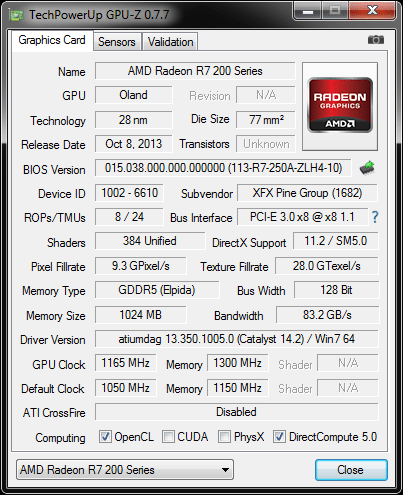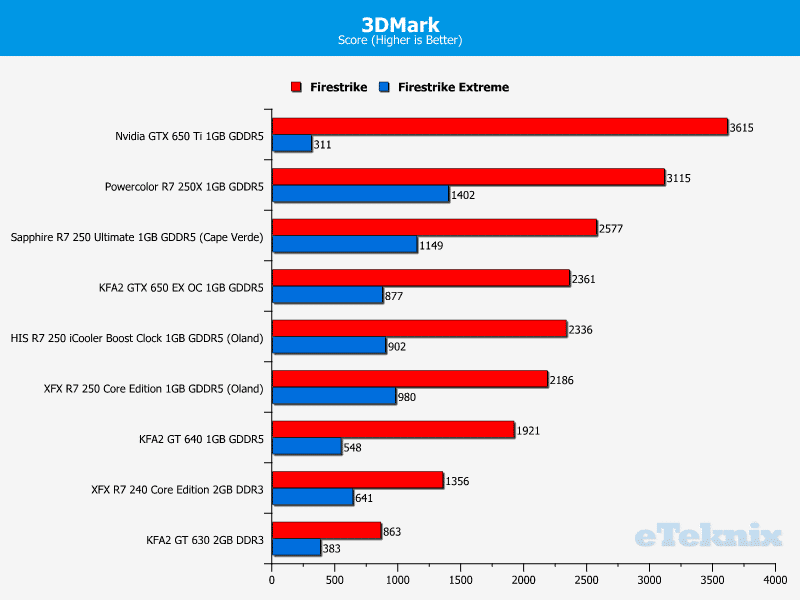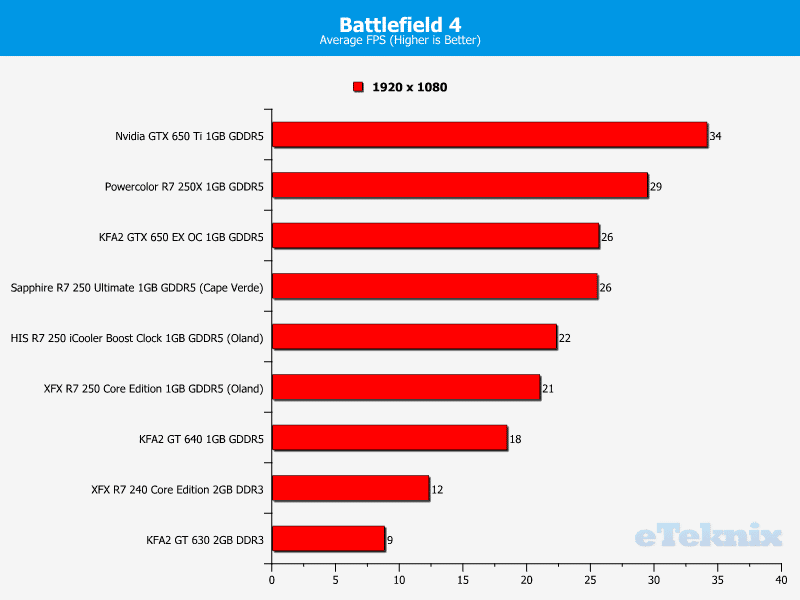XFX R7 250 Core Edition Passive 1GB Review
Ryan Martin / 11 years ago
Overclocking & Overclocked Performance
The overclocking ability of a graphics card is an important buying consideration irrespective of whether the graphics card is low end or enthusiast level. I’m sure everyone will agree that the more extra performance from overclocking – the better. In our overclocking we push each graphics card to its maximum stable core and memory frequencies. Typically we also raise the power limit to the maximum and where possible raise the voltages if this results in higher overclocks being achieved. We always aim for “24/7” stable overclocks that DO NOT result in potential heat on longevity issues so if we do raise the voltage it is still kept within safe parameters. The latest beta version of MSI’s Afterburner software is the overclocking utility of choice: this is because MSI Afterburner Beta versions typically allows you to circumvent overclocking restrictions – particularly those set by AMD.

The XFX R7 250 offered up a good amount of overclocking – 115 MHz on the core and 150 MHz (600 MHz effective) on the memory.While the HIS R7 250 we tested overclocked higher, this is still a decent result and the extra performance is welcomed. At 1050MHz stock the R7 250 is already pushed pretty close to the limits of the Oland XT silicon so anything extra is a bonus. Of course most people won’t be pushing this card too far as the passive cooling solution isn’t designed for overclocking unless you have really good ventilation inside your case.





















